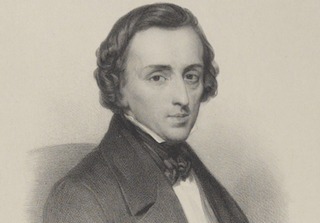Interesting Facts About Marie Sklodowska-Curie
If you visit Paris today, be sure to visit the Pantheon in the 5th Arrondissement. This is the final resting place of one of the most important women in the world. Paris, the French Capital, is more than happy to have such an intellectual grace her land. A woman whose legacy can never be forgotten in this lifetime, Marie Curie Sklodowska built a foundation on which modern science thrives.
Marie Curie was a Polish-born scientist who, against all odds, discovered one of the most significant components in the scientific world, radiation. She faced a lot of challenges in her lifetime. Apart from being poor, she was greatly disadvantaged by inequality, which thrived in the world of science at the time. The majority of her works can be seen at the Maria Sklodowska-Curie Museum in
Who Is Marie Curie Sklodowska?
Born on November 7, 1867, in Warsaw, Poland, Marie Curie (born Maria Salomea Skłodowska) was born into a family that knew the importance of education. She was the youngest of five children. Both of her parents, Bronislawa and Wladyslaw, were teachers. Her father was the first person to give her lessons in physics, maths, and chemistry.
Her thirst and passion for becoming a highly intellectual individual knew no bounds. Sadly, women were not allowed to further their education in Poland, as her application to study in Krakow was rejected based on gender. She held on to her dreams of studying in the university. In a bid to actualize the dream, she took up the post of a tutor to save money. At age 24, she departed Poland for Paris to learn more about physics and mathematics. She studied really hard and came out in flying colors; she had the highest distinction amongst her peers at the time.
She is remembered for her discovery of radiation and finding treatment for terminal illnesses such as cancer. With her husband, Pierre Curie, an internationally renowned physicist, Marie Curie is popular all over the world for the groundbreaking discoveries that earned her a Nobel Prize.
She gave hope to millions of women worldwide who had been held down by the shackles of gender inequality. She was the first woman to bag a Ph.D. from a French University. Not only that, she worked as the first female professor at the University of Paris. Besides, she set an unbreakable record for being the first woman to be awarded a Nobel Prize, not just once but twice.
Facts About Marie Curie
While her major accomplishments spread like wildfire the world all over in the field of science, here are some interesting fact about Marie Curie
1. Marie Curie Wasn’t a Frenchwoman
Marie Curie was a Polish-born woman who moved to the French capital in 1891. Her birthplace is
2. Her Husband was a Great Partner
Marie Curie and her husband transformed the scientific world. She got married to Pierre Curie, a well-renowned physicist, at age 28. While Marie was hell-bent on penning down her name in the history books, her husband was solidly behind her.
Despite being far away from her birthplace, she never forgot home. She taught her daughter how to speak Polish. Legends have it that she named the element, Polonium after Poland.
3. She Was a WWI Hero
When WWI broke out in 1914, Curie was unhappy with the absence of scientific advancements to the soldiers on the front line. The sooner injured soldiers get access to urgent medical care and attention, the better their outcomes. But advanced equipment like the X-ray machines was inaccessible.
Marie Curie personally provided medical aid to soldiers on the front line. With her knowledge in the field of radioactivity, Curie designed and equipped more than twenty ambulances, fondly called Little Curies. She went on to install 200 more at field hospitals. The ambulances were fitted with X-ray equipment and generators.
Curie and her 17-year-old daughter, alongside other surgeons, were able to operate on the lives of soldiers with bullet wounds and sharps. Her selfless service made her forget the dangers of working on the front lines.
After WWI, it was estimated that Curie and her group of female surgeons saved the lives of millions of soldiers, thanks to the mobile ambulances she designed.
4. Albert Einstein Became Her Personal Acquaintance
Albert Einstein and Curie had their first encounter at the Solvay Conference held in Brussels in 1911. The event, which saw the conglomeration of the world’s leading physicists, was strictly on invitation. Of all the 24 attendees, curie was the only woman. Einstein admired her courage, commitment, and passion that he encouraged here during one of the most controversial years of her life. She became the unlikely center of a sex scandal, a time when she was about to be awarded her second Nobel Prize. An encouraging letter from Albert Einstein, where he expressed his admiration for her, helped her pull through these trying times.
5. She Coined the Word “Radioactivity”
Curie never knew that thorium was a radioactive element until 1898. With her husband’s help, the couple decided to publish their latest discovery of a new element known as Polonium. Later that same year, the couple discovered yet another element called radium. In the publication of their findings, the word “radioactivity” was mentioned, and that gave birth to a new word.
6. Extensive Exposure to Radiation Killed Her
Marie Curie actualized her dream before she died. Sadly, her research eventually killed her. In 1934, she visited the hospital for medical care and attention. She died on the 4th day of July from a condition known as aplastic anemia, an illness caused by overexposure to radioactive elements. Even the most renowned scientists never knew the dangers of radiation on the human body.
Today, you will find all of her paperwork in a specially designed container that cannot be touched without the right protective gear. Her remains lie in the Pantheon in Paris, a mausoleum designed for highly revered French personalities.




